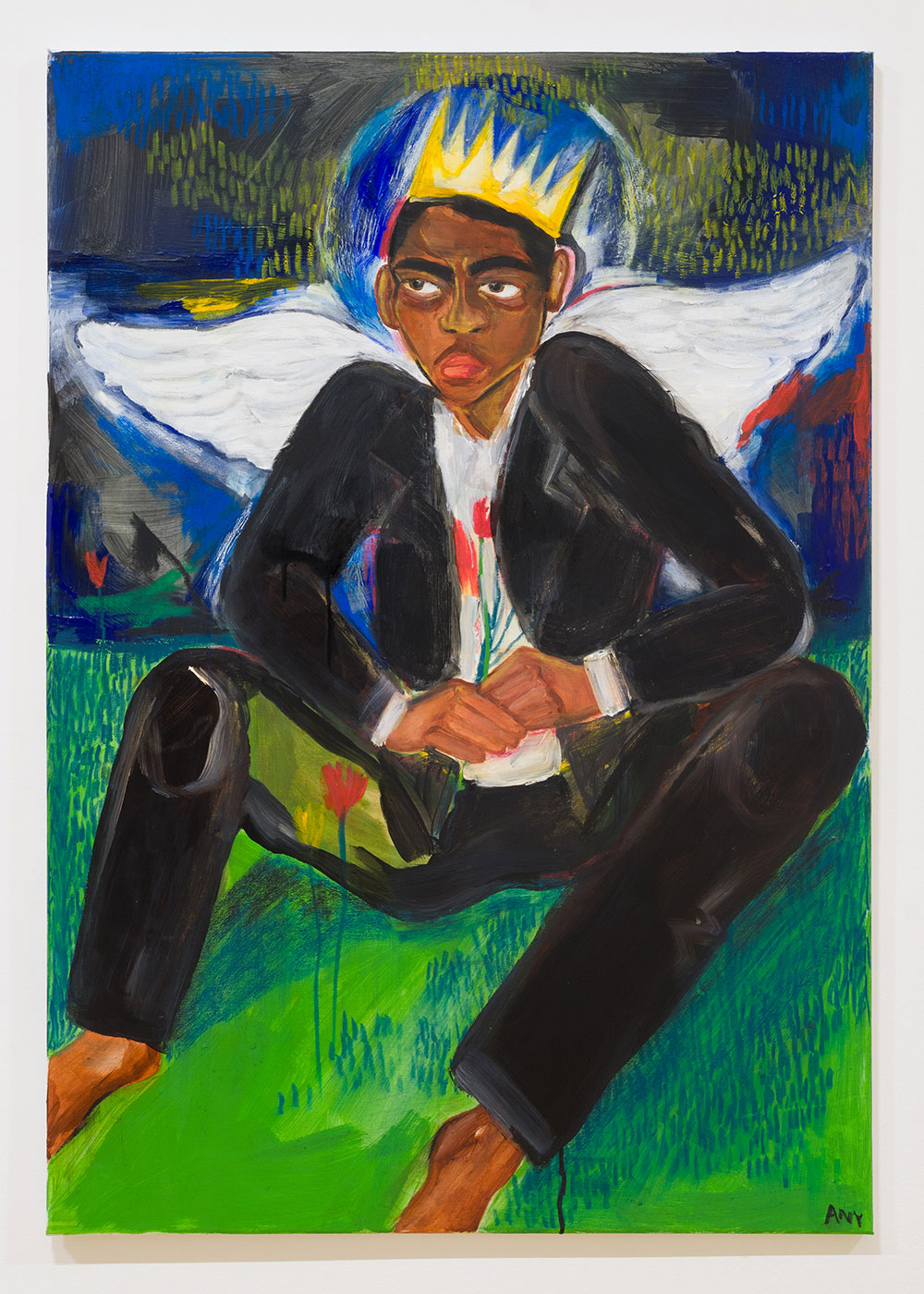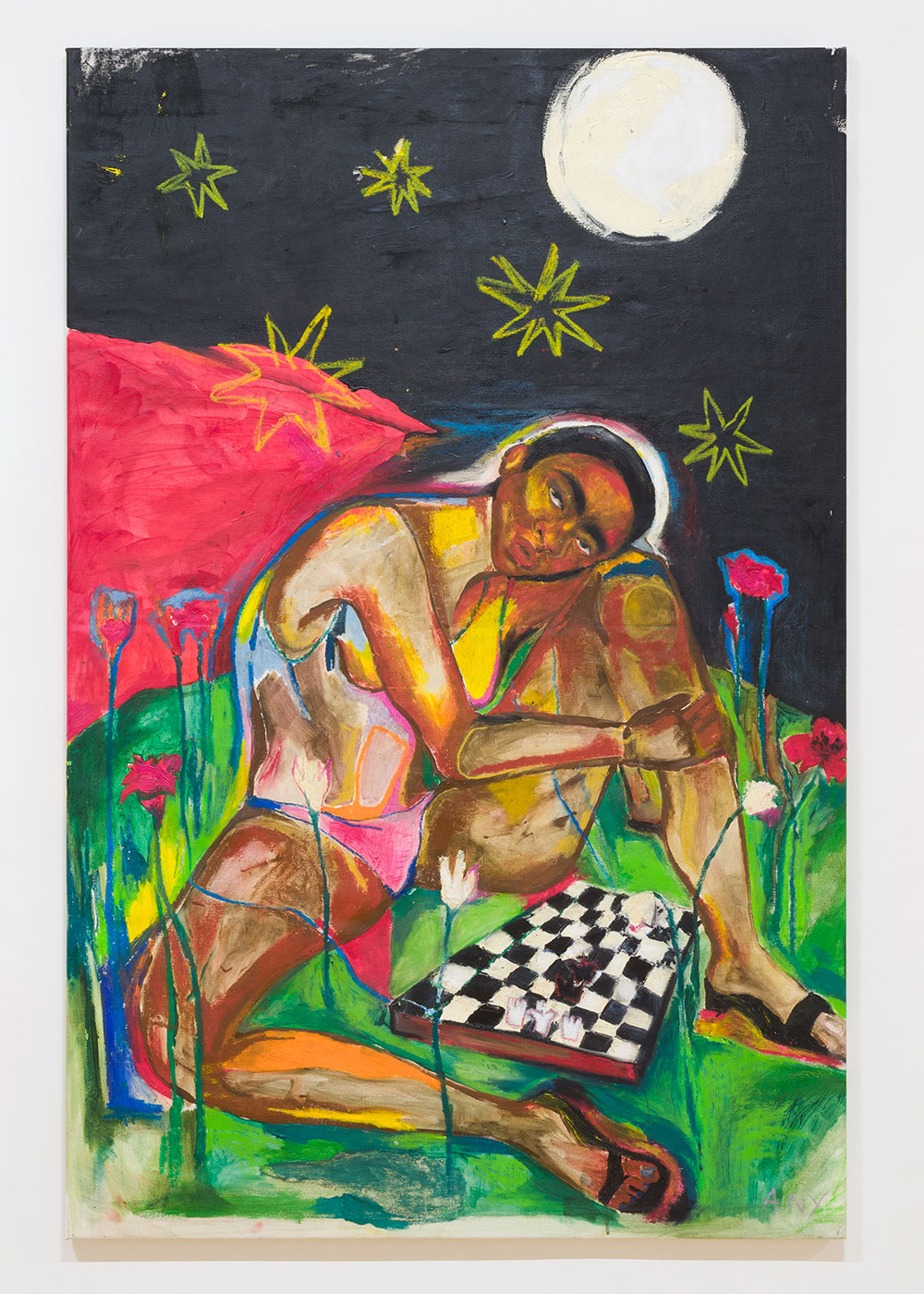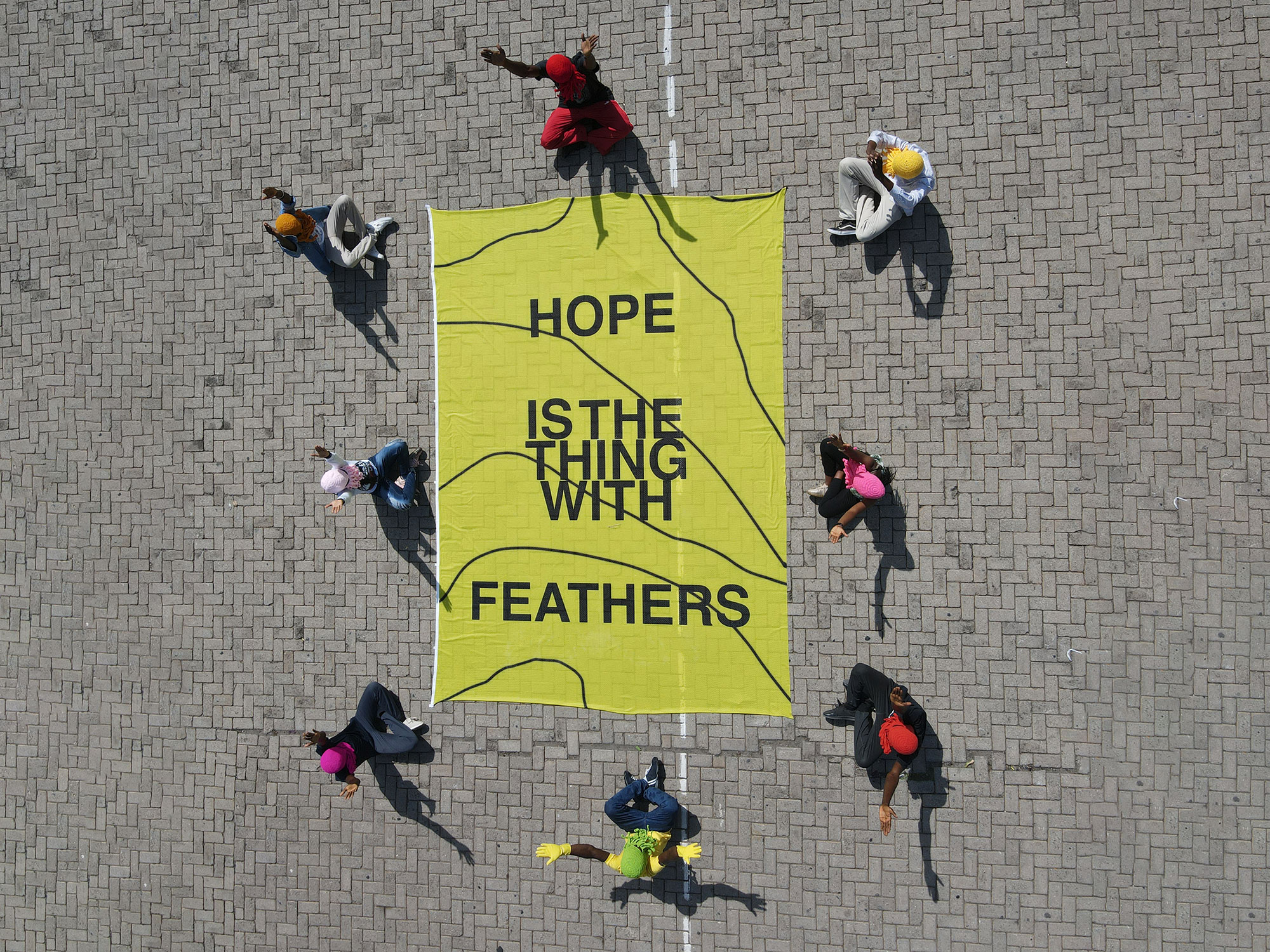"When people ask me 'When did you start painting?', I answer 'When I needed it the most' and I try to explain is that I painted from a very young age, the paintbrush is something I held since the age of one. When I was younger, I tried to sketch, I tried to make things perfect — faces perfect — everything needed to be perfect, and every person I painted was white, I reproduced beauty standards and did not give Black characters any space in my art.
2020 changed me as a person and it changed the way I painted. It changed my motives from the things I thought will gain attention to the things I felt I needed to paint because they deserve attention. I found a way to express without hiding. When the murder of George Floyd happened and I became aware of the system I live in, I became aware of my Blackness and 2020 started an ongoing process for me of reconnecting with my Blackness and the beauty in Blackness.
For me, painting mostly human beings is a concrete reflection of the social life, of human connections. I leave room for interpretation, for beauty, colors and abstraction — but my motives are always figurative. I usually paint on canvas or paper and I love to use oil pastels in combination with acrylic paint. When people ask me about my style, I’d describe it as expressive, figurative painting. I started to express myself in the tradition of Black radicalism; I reflect on Black history, African history, and especially Pan-African history and my own identity; and I started to honor ancestry.
Today, my paintings represent Black people as a whole — community, resistance, joy, love, strength, wisdom and so much more. When I paint, I want to connect with other African people and I want to speak up as well. My biggest inspiration and role model is Emory Douglas, an artist and the cultural minister of the Black Panther Party. His art reminds me that art is to serve the people and can be used as a tool of resistance against oppression.


